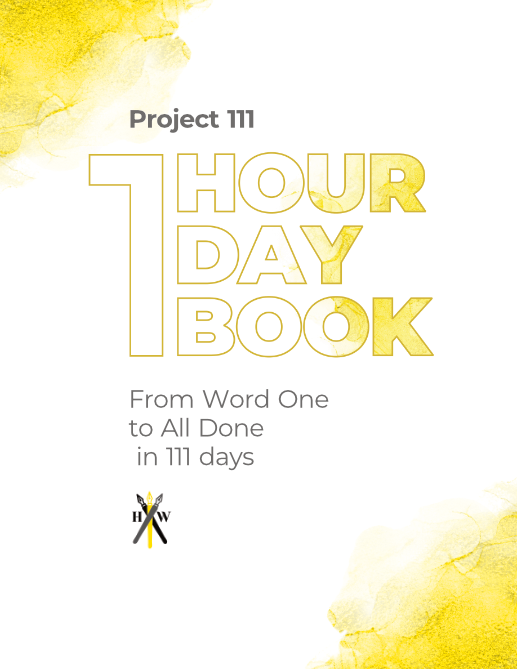Every story has a theme, and plenty of stories have multiple themes. The clarity and impact of those story themes vary based on a number of factors, but the overall importance of a story’s theme is its ability to change you. I would argue that story themes are one of the main reasons we read books, watch movies, and interact with story-based media like video games.
Perhaps while reading a short story or another piece of fiction, you’ve realized that the story seems to present you with a piece of philosophy or worldview. That concept will typically represent the central idea of the story and its theme. Seeing as stories are a place to explore what it means to be human, a story’s theme typifies that exploration in a consolidated idea.
But how do you make a theme? Do you really have to stick to one of the 6 most common themes all the other writing articles are about?
The answer is no. You should write about what fascinates you! Explore your humanity through stories, and get ideas across to your readers.
In this article, we’ll discuss five ways that authors (you included) integrate theme into their stories, and we’ll give an example to go along with each instance. Get ready to know just about everything about story themes!
Table of Contents
How Stories Convey Theme
There’s no single way to convey theme across the entirety of your story. Typically, authors will focus on a literary element or two and the theme will then seep into the other layers of the book.
Authors integrate the theme into their stories through setting, character, plot, dialogue, and repetition of a motif. Obviously, that’s a long list, and I wish there were a way to narrow it down, but any of these elements alone or in combination can get the story’s theme across.
We’ll walk through all of the previously listed elements and discuss ways that they can contribute to a story’s theme, each with an example or two.
1. Setting

Setting is one of three crucial elements to a story, as we learn in second grade (Setting, plot, and character). A story’s setting consists of the place(s) and time(s) the reader and characters experience throughout the story.
Most stories use setting to convey minor story themes because it’s often reliant upon character interaction and other elements. Some stories, however, prioritize setting as storytelling. These stories typically use the setting to convey theme.
For example, Jack London, a naturalist fiction writer, often makes setting the most important element in his stories. “To Build a Fire” is a short story (which you can read here) that cleverly uses setting to convey the theme of the story. The conflict in this short story isn’t person to person but man vs. nature.
As with most naturalist writing, this story’s theme boils down to “No matter how thoroughly humanity convinces itself otherwise, it only exists at the whim of nature. Despite the simple nature of the story’s theme (pun intended), the unique elements of the short story allow the theme to distill into the reader’s mind in a different way.
Just because the theme may be simple doesn’t mean the story isn’t worth experiencing. I had read other naturalist writing that shared a similar theme, but this story has stuck with me because of how it’s told. Just because a theme has been done before doesn’t mean you can’t give it your best shot.
Another story with setting as a vehicle for theme is John Steinbeck’s The Grapes of Wrath. This particular example can show us how setting affects minor themes.
Steinbeck sets up the novel in a rather unorthodox way with short stories scattered throughout the text. If you’d like to read more about the structure of the novel, check out this CliffsNotes article. These short stories typically deal with the natural setting the novel takes place in.
The novel’s setting plays into almost all of the major story themes the novel puts forth. It would be difficult to think of this story having taken place in a time or place other than the Dust Bowl. So much of the text emphasizes the importance of the land, and how it relates to families, social structures, discrimination and more.
The novel’s setting comes across in the short stories, the main text, and Steinbeck’s descriptive language. Each of these places subtly point to larger themes in the text.
2. Character

The characters in a novel have one of the strongest positions to present the reader with the main theme of a book. Characters interact with almost every other story element. They’re the conduit for dialogue, the chess pieces moved by the plot, and exist in the story’s setting.
They also have character arcs and navigate the tale’s conflict.
One of the best ways to convey the story’s theme is through a character arc.
For example, Brandon Sanderson’s hefty Stormlight Archives series has plenty of story themes (given the length of each installment), but one theme comes across from almost every main character: mental health.
The first novel’s main character, Kaladin, has had a difficult life with plenty of trauma. Throughout the course of the story, we see Kaladin deal with his depression and trauma side by side with the plot. His arc (which lasts multiple books) leads him to come to terms with his plot in life.
Lots of other characters also deal with mental illness in various forms, and due to their prevalence I would definitely consider it a theme that warrants attention. But it’s not the fact that these characters have mental illness that becomes the theme, I’d say the theme is that mental illness is a struggle, but one that can be overcome or at least mitigated.
3. Plot

The connection between plot and theme appears most obvious. For me, the interplay between plot and theme helped me practice understanding movies as a kid. Those early movies typically presented a simple, moral-based plot. Let’s take Lilo and Stitch for example.
They definitely explain the theme through dialogue (think, “Ohana means family; family means nobody gets left behind or forgotten), but the plot secures and broadens that common theme: Family can be found anywhere and in anyone.
The plot conveys this theme by showing how Lilo and Stitch grow to love each other despite some tricky times and misunderstandings. We see the same process occur with Lilo and her sister, Nani. They have a rather broken relationship at the beginning of the movie, but throughout the movie’s plot points, the two become closer even as Lilo and Stitch do (and lots of the aliens).
Simple morals as theme don’t have a monopoly on plot-based theme however. Plenty of complicated books and movies use this method of producing and translating meaning. One complex example comes from Hyperion.
This novel, due to the nature of the short story structure, proposes many themes and ideas, that finding a central theme or idea proves nearly impossible. However, each of the character’s stories introduces plot elements that configure its unique theme.
An example within the book comes from one of the characters whose daughter goes on a science expedition and contracts a rare disease that reverses her body’s chronology. Essentially she begins to age backwards.
This plot introduces the theme of the relationship between family and time. We see the parents of the child experience their daughter’s youth all over again, only now they’re much older. They still have many of the joys, but they also feel an acute sadness as they don’t know what will happen when the aging reaches completion.
Each of the stories in this book use plot to contribute minor themes to the larger novel.
4. Dialogue

Dialogue’s relation to theme typically comes about through the use of subtext. If you’re unfamiliar with subtext or need help including it, check out this Habit Writing article.
Most books have tons of dialogue that span the course of the story. With that in mind, does dialogue always need to press the theme?
No, it really doesn’t. Not every piece of dialogue needs to lug around a deeper meaning. But, the way you use dialogue can definitely point towards something larger and can rather poignantly convey the theme.
We already mentioned how Lilo and Stitch used dialogue to present the theme to the viewer, but this method works for more complicated themes as well.
Let’s look at one of the great American novels. It typically finds itself placed in the top ten of plenty of lists. I’m of course talking about To Kill a Mockingbird by Harper Lee.
This book is a masterclass for presenting theme. I swear it uses every single one of these methods and does it sublimely. With dialogue, however, we see that Lee mostly uses the dialogue of Atticus Finch to convey the theme. You can read lots of his quotes on this website and most of them present a major or minor theme of the novel.
We certainly see it in other places, but these moments are almost sacred to the meaning of the book.
5. Repetition of a Motif

A motif in literature is a recurring element of the story that typically holds a larger meaning. The motif and the theme often go hand in hand.
Many stories will have an image or idea that the reader experiences on multiple occasions throughout the book. One of the most famous motifs in literature is the green light in The Great Gatsby. The protagonist of the story gazes into the green light across the docks on multiple occasions throughout the novel.
Most people agree that this light symbolizes his longing for Daisy, money, and the American dream. These three things are more broadly discussed throughout the novel, but the motif functions as a way to help the audience analyze the book.
Motifs produce images that stick with the audience because of the powerful symbols as well as repetition.
The Lord of the Rings uses a multitude of motifs. Light and darkness is a classic motif and one that readers find over and over throughout the novel. The ring is a physical motif and the temptation to use it is a representation of the battle between good and evil on a personal level. Fellowship is another common motif in the book.
Let’s look at fellowship as a motif and then see what themes it points to. Obviously “fellowship” is a prominent enough motif to find its way into the title of the first book in the trilogy (which Tolkien wanted to be a single novel, hence why I refer to the trilogy as a book or novel rather than the plural).
Brotherly love finds its place in most of the good characters we follow. The four hobbits have an excellent relationship with each other. The fellowship of the ring strengthen their bonds through friendship and trials. The group shares songs and poems with each other. They also share plenty of forehead kisses (or lip kisses from Viggo).
The common theme of fellowship plays into the larger theme of good versus evil. Tolkien proposes that in the face of evil and darkness, the best course of action is to find fellowship with your fellows.
Conclusion

A story’s theme can be whatever you want. Remember that stories enable humanity to express philosophy, worldviews, and ideas in a way that affects us subliminally.
There’s a reason some of the greatest thinkers of all time have used stories to teach and explain. They have the ability to change us, make us think, and give us experiences we’d never have otherwise.
The reason they can accomplish so much is because of theme. The story’s theme lies underneath the plot and the story. It’s what we think about when we’ve finished the story. It represents the lessons we learn from a novel, movie, or video game.
Authors typically convey theme through a combination of five different storytelling elements:
1. Setting
2. Character
3. Plot
4. Dialogue
5. Motif
When stories have a strong theme or purpose, they’ll typically adopt all of these elements to produce the main idea. Lots of stories, however, will have multiple themes and each of these elements will convey at least a minor theme.
As you read your next book, pay attention to these elements and when you finish it, consider what the main theme was and how it came across. Then do the same with minor themes.
Hopefully you’ll see the power that each of these elements has. When producing your own theme, do what you enjoy most and be sure to use subtext. Moralizing in a novel can turn off lots of readers. Make sure that the theme doesn’t eclipse the story to the point where you feel like you’re reading a philosophy book instead of a novel.
But have fun with it! Experiment and see what works for you and your style.
For more writing tips, check out the other articles on the Habit Writing blog.
gavinwride
Gavin is a fantasy author, short story enthusiast, and nature lover. When he’s not reading, writing, or exploring the outdoors, he is likely playing games. His board game collection is probably too big for someone living in a small apartment, and he has enough yet-to-be-played video games to fill a lifetime. His favorite book is "The Name of the Wind". His favorite author is Edward Abbey. His favorite game is "Dark Souls III", and he’d be more than happy to spend the day talking about lore, bosses, and game mechanics.
Our 84-page book planner and 111 day writing course.
